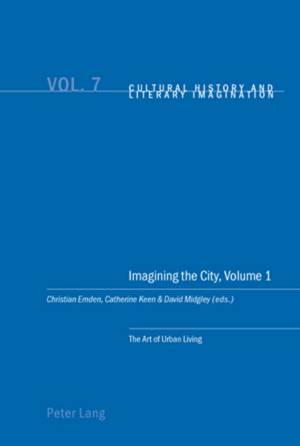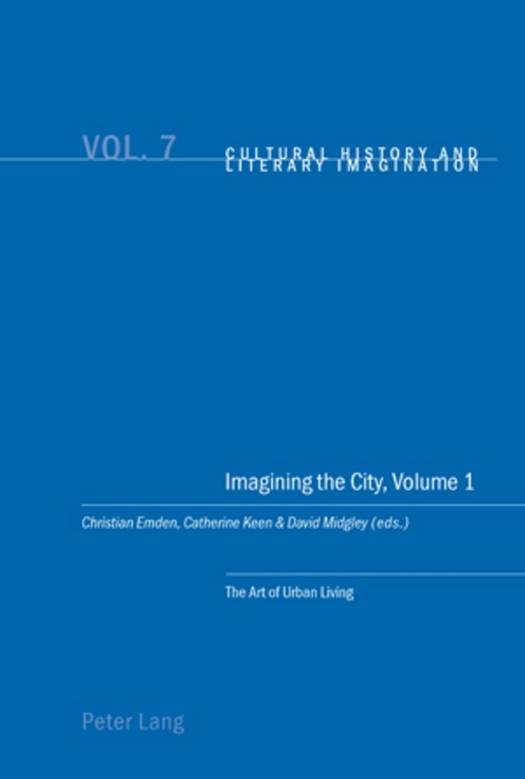
Door een staking bij bpost kan je online bestelling op dit moment iets langer onderweg zijn dan voorzien. Dringend iets nodig? Onze winkels ontvangen jou met open armen!
- Afhalen na 1 uur in een winkel met voorraad
- Gratis thuislevering in België vanaf € 30
- Ruim aanbod met 7 miljoen producten
Door een staking bij bpost kan je online bestelling op dit moment iets langer onderweg zijn dan voorzien. Dringend iets nodig? Onze winkels ontvangen jou met open armen!
- Afhalen na 1 uur in een winkel met voorraad
- Gratis thuislevering in België vanaf € 30
- Ruim aanbod met 7 miljoen producten
Zoeken
Imagining the City, Volume 1
The Art of Urban Living
€ 105,45
+ 210 punten
Omschrijving
Urban living presents both challenges and opportunities for individuals and societies in their attempts to maintain and determine their cultural identity. Mobility, fragility, and inventive self-fashioning are common features of life in Europe's big cities throughout the modern period.
This volume is based on papers given at the conference 'Imagining the City' held in Cambridge in 2004. Together they examine the city as imagined space and as a matrix for imagined worlds, using French, German, English, Italian, Russian and North American examples. They analyse modes of literary representation of the city and literary readings of cultural politics; the impact of the imagination of artists and architects on the fashioning of urban landscapes; the effect of new technologies and media (flight, photography, film, and the internet) on urban perception; and the impact of artistic interventions and activist movements on the construction and use of public spaces in the world of today. A second volume will examine the cultural and political moulding of urban space in a similar comparative perspective.
This volume is based on papers given at the conference 'Imagining the City' held in Cambridge in 2004. Together they examine the city as imagined space and as a matrix for imagined worlds, using French, German, English, Italian, Russian and North American examples. They analyse modes of literary representation of the city and literary readings of cultural politics; the impact of the imagination of artists and architects on the fashioning of urban landscapes; the effect of new technologies and media (flight, photography, film, and the internet) on urban perception; and the impact of artistic interventions and activist movements on the construction and use of public spaces in the world of today. A second volume will examine the cultural and political moulding of urban space in a similar comparative perspective.
Specificaties
Betrokkenen
- Uitgeverij:
Inhoud
- Aantal bladzijden:
- 348
- Taal:
- Engels
- Reeks:
- Reeksnummer:
- nr. 7
Eigenschappen
- Productcode (EAN):
- 9783039105328
- Verschijningsdatum:
- 15/05/2006
- Uitvoering:
- Paperback
- Formaat:
- Trade paperback (VS)
- Afmetingen:
- 150 mm x 220 mm
- Gewicht:
- 479 g

Alleen bij Standaard Boekhandel
+ 210 punten op je klantenkaart van Standaard Boekhandel
Beoordelingen
We publiceren alleen reviews die voldoen aan de voorwaarden voor reviews. Bekijk onze voorwaarden voor reviews.










